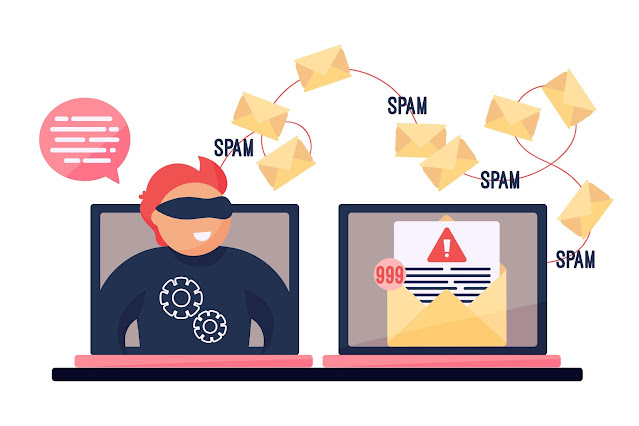What Role Does Spam Filtering Play in Antivirus Software Email Security?
Introduction
In the digital age, email has become an integral communication tool for individuals and businesses alike. However, the convenience of email communication comes with its own set of challenges, chief among them being the deluge of unsolicited and potentially malicious emails known as spam. To counter this menace, Email security systems employ an essential component called spam filtering. This comprehensive guide delves into the multifaceted role that spam filtering plays within the realm of antivirus software email security, exploring its mechanisms, benefits, and its indispensable role in safeguarding users from the perils of spam and related cyber threats.
I. The Rise and Perils of Email Spam
Proliferation of Unsolicited Emails: Spam emails, defined as irrelevant or malicious messages sent en masse, clog email inboxes and waste valuable time for users.
Malicious Payloads: Beyond merely inconveniencing users, spam often carries malicious payloads such as malware, phishing links, or scams designed to compromise sensitive information or even entire systems.
II. Understanding Antivirus Email Security
The Role of Antivirus in Email Security: Antivirus email security is a comprehensive approach to protecting email communication from cyber threats. It involves multiple layers of defense, with spam filtering being a critical component.
Integration with Email Servers: Email security software is typically integrated into email servers, allowing it to scan incoming and outgoing emails for potential threats before they reach users' inboxes.
III. Mechanisms of Spam Filtering
Content-based Filtering: Content-based filtering examines the content of emails, analyzing keywords, phrases, and patterns that are commonly associated with spam or malicious content.
Sender Reputation Analysis: Sender reputation analysis assesses the reputation of the sender's domain or IP address. If a sender is associated with a history of sending spam, their emails are more likely to be filtered.
Heuristic Analysis: Heuristic analysis involves evaluating the characteristics of an email, such as its structure, attachments, and links, to determine its likelihood of being spam.
Bayesian Filtering: Bayesian filtering uses statistical techniques to identify patterns in emails. It learns from previously classified emails to make predictions about the spamminess of new emails.
IV. The Role of Spam Filtering in Antivirus Email Security
Detecting Malicious Attachments: Spam filtering scans email attachments to detect potential malware, preventing users from inadvertently downloading harmful files.
Preventing Phishing Attacks: Many phishing attacks involve deceptive emails that aim to trick users into revealing sensitive information. Spam filtering helps identify and block such phishing attempts.
Minimizing False Positives: Effective spam filtering systems strive to minimize false positives—legitimate emails mistakenly classified as spam—ensuring important communications are not missed.
Preserving Network Resources: By blocking spam at the server level, spam filtering helps conserve bandwidth and reduces the load on email servers.
V. Benefits of Spam Filtering
Enhanced Security: Spam filtering is a vital layer of defense against phishing attacks, malware distribution, and scams, significantly enhancing the security of email communication.
Productivity Gains: Spam filtering reduces the time users spend sifting through irrelevant emails, allowing them to focus on important tasks and improving overall productivity.
Protection against Zero-Day Threats: Antivirus software email security solutions with advanced threat detection capabilities can protect against zero-day threats—newly discovered vulnerabilities for which patches are not yet available.
VI. Challenges and Considerations
False Negatives: While minimizing false positives is essential, security software must also avoid false negatives—spam emails that go undetected. Striking the right balance is crucial.
Sensitivity and Customization: Spam filtering solutions should allow users to adjust sensitivity levels and customize settings to align with their specific needs and preferences.
VII. Integration with User Education
Cybersecurity Awareness: While spam filtering offers robust protection, educating users about the dangers of spam and phishing is equally important. Users should be cautious even when emails make it through filtering.
Recognizing Social Engineering: Even the best spam filters can't always catch well-crafted social engineering attempts. Educated users are more likely to identify and avoid falling for such tactics.
VIII. Future Trends in Spam Filtering
Artificial Intelligence and Machine Learning: The integration of AI and machine learning allows spam filters to adapt and learn from emerging threats, enhancing accuracy and reducing false positives.
Behavioral Analysis: Future spam filters might employ behavioral analysis to detect anomalies in email communication patterns, identifying potential threats more effectively.
Conclusion
In the intricate web of modern cybersecurity, spam filtering within antivirus software email security systems emerges as a pivotal component in ensuring the safety and integrity of email communication. By leveraging content analysis, sender reputation assessment, heuristic analysis, and statistical techniques, spam filtering effectively thwarts the infiltration of spam, phishing attacks, and malicious payloads. Its role extends beyond mere convenience, encompassing enhanced security, productivity gains, and protection against the evolving landscape of cyber threats. As technology advances and cybercriminals become more sophisticated, the future of spam filtering lies in the integration of AI, machine learning, and behavioral analysis to provide even greater accuracy and protection. In the ongoing battle against the deluge of spam, spam filtering stands as an indispensable guardian, fortifying email communication against malicious intent and preserving the sanctity of digital exchanges.




Comments
Post a Comment